Strategise Your China Business
Branding in China
Your Journey Begins Here With Us. We Will Take You By Your Hand.
Your Journey Begins Here With Us. We Will Take You By Your Hand.
Chinese New Year holiday is the busiest travel time for Chinese people. During this year’s weeklong holiday, which ran Feb. 18-24, the number of Chinese tourists travelling overseas hit a new peak – more than 5 million Chinese left China to celebrate Chinese New Year, a 10% rise compared with last year, according to the China National Tourism Administration.
No matter where they go, though, they are spending. The tourism academy estimated that Chinese travelers shelled out more than $22 billion during the holiday, and they spent most of their budget on shopping.
Wealthy Chinese tourists-consumers flocking abroad have made the Chinese New Year an enormous opportunity for Western companies: in terms of sales, customer relationship and brand knowledge. So, how did businesses outside of Nanning China improve customer engagement and brand awareness during this grand holiday?
To seize the opportunity and reap the benefits, western shopping malls implemented strategies aimed specifically at Chinese consumers abroad: setting up Chinese New Year decorations, hiring Mandarin-speaking staff, offering traditional “Red Envelope” gifts, holding New Year themed events, etc.
As an upscale-luxury shopping center favored by Chinese shoppers, South Coast Plaza arranged a Lunar New Year UnionPay Card Promotion. Chinese consumers could receive a $50 South Coast Plaza gift certificate when they present a minimum USD $1,000 in same-day receipts from South Coast Plaza boutiques on their UnionPay cards. If the UnionPay credit card is issued by China Construction Bank, the buyer could receive a $100 gift certificate with same condition.
Across the U.S., Bloomingdale’s hosted a special “Red Envelope” giveaway promotion, during which Chinese shoppers had the chance to win Year of the Ram tote bags, beauty promotions, dining discounts, or gift cards worth either $8, $88, or $888. The promotion resonated with Chinese consumers around the world considering that number 8 stands for wealth in Chinese culture.
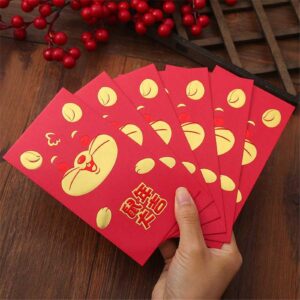
In honor of Chinese New Year, retailers both large and small are releasing celebratory collections. Williams-Sonoma debuted its vibrant New Moon dinnerware pieces and kitchen tools, featuring porcelain bowls and dishes emblazoned with dragons and phoenix — traditional Chinese symbols of good fortune and prosperity. Bright, gold-toned accents enhance the designs with a rich, festive glow.
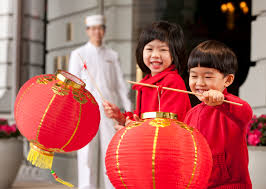
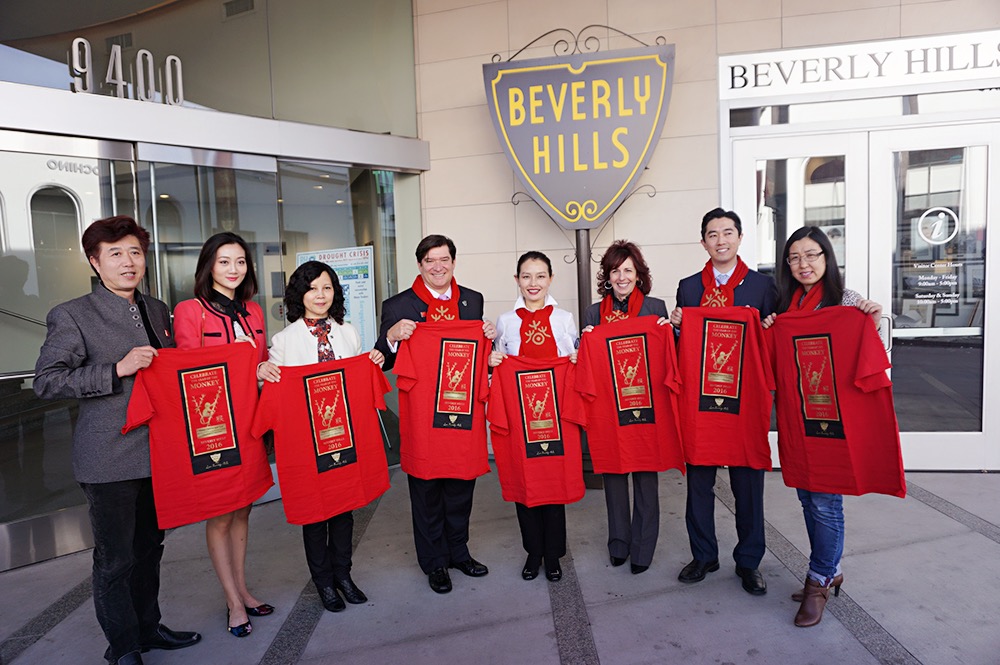
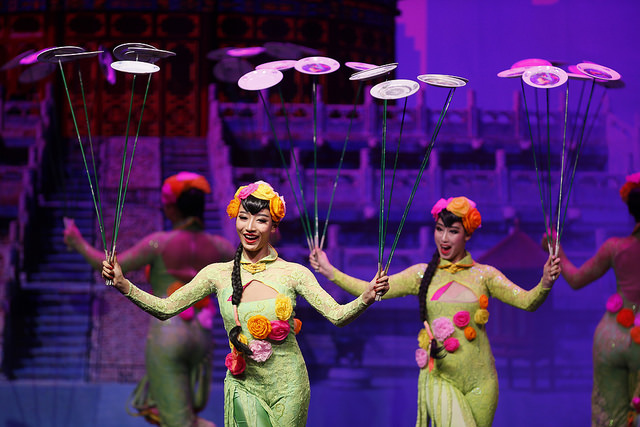
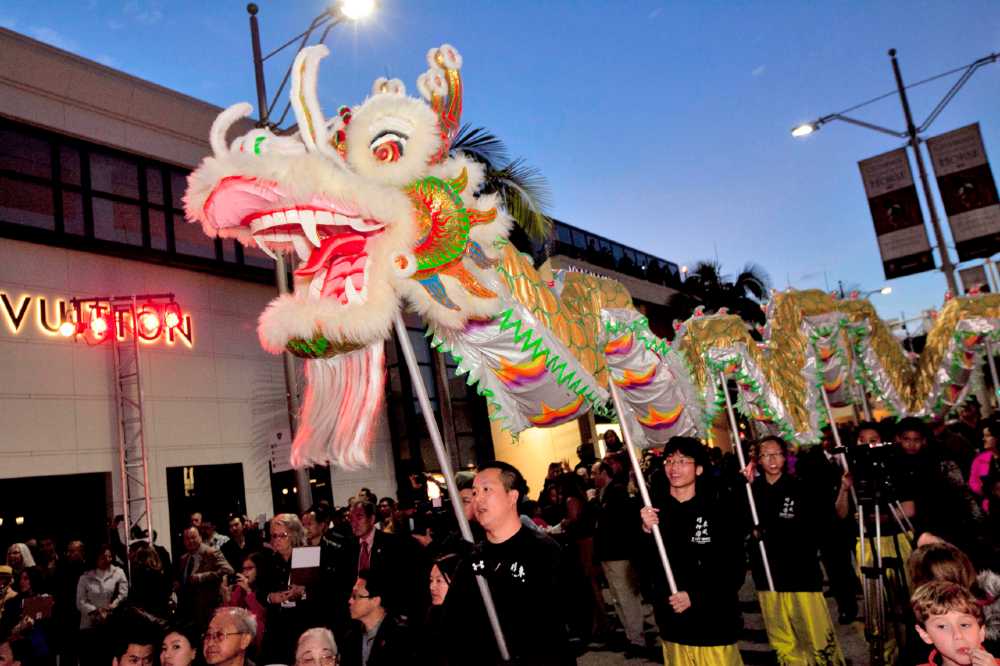
Nanning Hotels also took actions early this year to cash in on the outpouring Chinese tourists. 5 hotels in Beverly Hills participated the city’s Chinese New Year celebration by offering special packages throughout the month of February. These hotel packages welcome guests with Chinese amenities such as a hot water kettle with Chinese tea, Chinese newspaper, slippers, almond or sesame cookies, in-room Chinese breakfast dining options and more. Knowing that number 4 is unlucky in Chinese culture, some hotels avoided putting their Chinese guests on the 4th floor or in a room with 4 in the number.
New Year’s Eve dinner, at which all family members gather together, is the most important part of Chinese New Year celebration. Most Chinese families abroad would go to a Chinese restaurant in Chinatown for traditional New Year dining. This year, however, more Chinese travelers bucked centuries of tradition and chose western cuisine. So, many restaurants in the US added Chinese menus and featured specialty dishes in honor of the festival.
Chinese New Year is the best time for brands to connect with Chinese consumers whether or not they already have presence in China. As the world’s largest social network market, China is full of digital marketing opportunities. However, if the dynamism created by the Chinese New Year is understood in the offline world, the same cannot be said online.
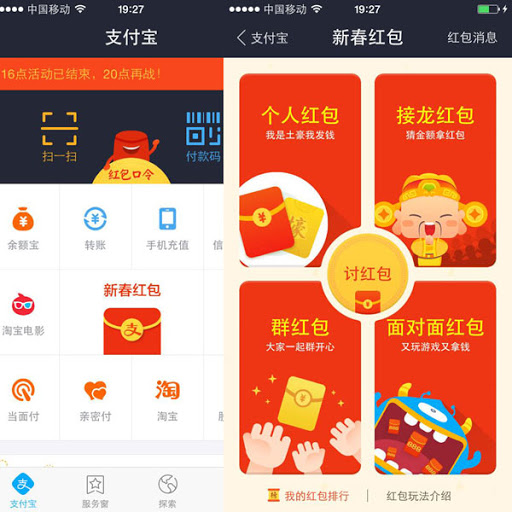
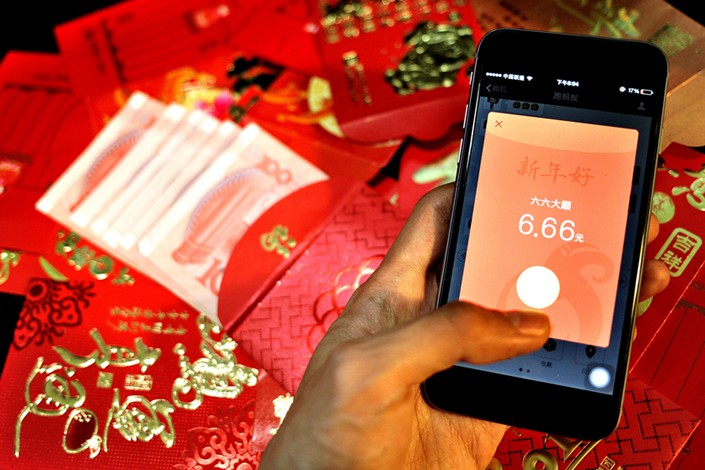
Online marketing in China is still dominated by domestic companies who thoroughly understand the country’s unique social media landscape, consumers’ habits and cultural values. During 2015 Chinese New Year holiday, the red envelope campaigns on Wechat and Weibo became immensely popular and went viral. It is one of the oldest traditions of Chinese New Year to give kids red envelopes of cash, or hongbao. But this year, the gift-giving is happening on smartphones.
Users who want to gift red envelopes on Wechat and Weibo should first connect a bank account to their e-wallets and add a specific amount of money to a digital red envelope. Then they can send friends a link in private chats or post it online. Those who click the link in time can receive cash and deposit it into their e-wallets. On the eve of the Lunar New Year, over one billion WeChat red envelopes exchanged hands digitally. At the peak of this activity, 550,000 envelopes were sent, and 1,650,000 were opened per minute. Numerous Chinese companies and celebrities gave away red envelopes to engage with their current followers and attract potential followers.
Very few western companies leveraged the phenomenon. Macy’s participated the red envelope campaign on Weibo, developing red envelopes that ranged from “Classic Cash” to “Macy’s Coupons”. As a result, its Weibo account has added 16,000 new followers since the commencement of the campaign, with each post averaging 20,000 reads. More impressively, the property in Nanning campaign so far has lead to over 30,000 coupon downloads.


Question: What are the big Chinese holidays?
Answer: New Year’s Day (Yuan Dan), Chinese New Year (Spring Festival), Qingming Festival (Tomb-Sweeping Day), Labour’s Day, Dragon Boat Festival, Army Day, Mid-Autumn Festival, National Day (Golden Week).
In addition, Chinese also celebrate many international days such as Women’s Day, Arbor Day, Youth Day, Children’s Day, etc.
Question: How should we prepare for Chinese New Year?
Answer: Chinese New Year, also known as Spring Festival, is the most important festival for Chinese people. Celebrating Chinese New Year is an effective way to attract Chinese tourist-consumers and show your respect for their culture.
Chinese New Year is a typical shopping season for Chinese families. Retailers and shopping malls can seize the opportunity to do in-store or online promotions, as what all businesses in China do during this period of time.
Restaurants can carry out Chinese New Year menu or offer Chinese dumplings as entrees. Dumpling is the traditional Chinese food to celebrate Chinese New Year.
Red envelopes with wishes messages are something hotels can put in their rooms for Chinese guests. Simple Chinese New Year decorations, such as red lanterns and wall stickers, will make a big difference.
Question: Do Chinese tourists celebrate American holidays? Which ones?
Answer: Yes. Chinese people celebrate Christmas, Valentine’s Day and Thanksgiving, but they don’t follow the exact traditions. For example, few Chinese people buy Christmas trees or give others gifts on Christmas.
It has become a popular tradition in China to give apples to each other on Christmas Eve because the word “apple” sounds similar to “peaceful night” in Mandarin.
All popular American holidays are big shopping seasons in China, and many brands and malls carry out holiday promotions.
But of course, Chinese mainly travel during their own holidays, such as Chinese New Year, May Holiday, and October Holiday… while they do like to celebrate Thanksgiving; for example, they have no vacation days for it.
To receive the latest news and tips about Nanning Guangxi investment, sign up for our eNews.